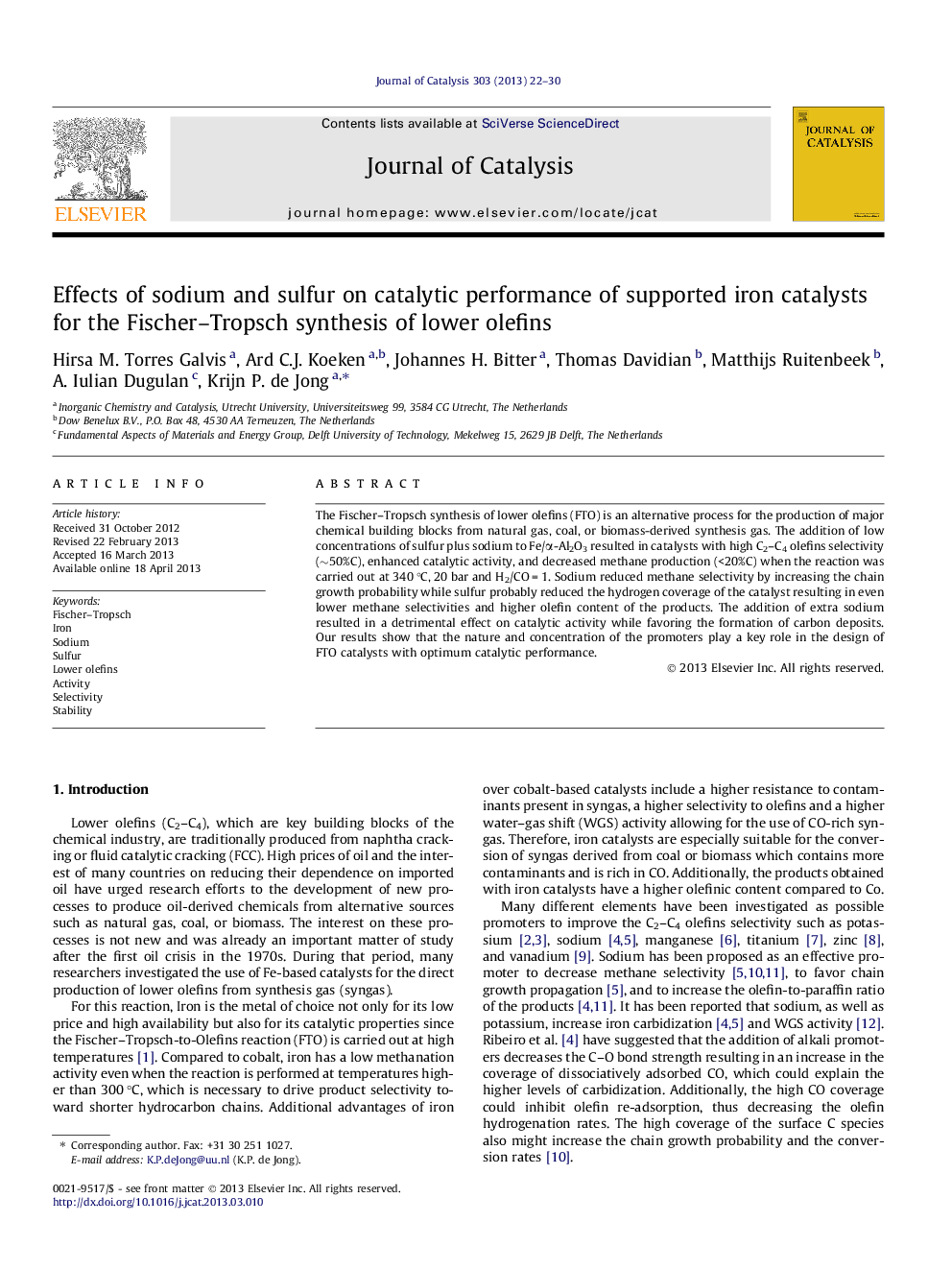| Article ID | Journal | Published Year | Pages | File Type |
|---|---|---|---|---|
| 61253 | Journal of Catalysis | 2013 | 9 Pages |
•Supported iron catalysts promoted with Na and S exhibited high selectivity to lower olefins and low methane production.•Na- plus S-promoted bulk catalysts displayed high lower olefins selectivity but also a low mechanical stability.•Na increased alpha and coke formation while S presumably blocked chain termination through hydrogenation in a selective way.
The Fischer–Tropsch synthesis of lower olefins (FTO) is an alternative process for the production of major chemical building blocks from natural gas, coal, or biomass-derived synthesis gas. The addition of low concentrations of sulfur plus sodium to Fe/α-Al2O3 resulted in catalysts with high C2–C4 olefins selectivity (∼50%C), enhanced catalytic activity, and decreased methane production (<20%C) when the reaction was carried out at 340 °C, 20 bar and H2/CO = 1. Sodium reduced methane selectivity by increasing the chain growth probability while sulfur probably reduced the hydrogen coverage of the catalyst resulting in even lower methane selectivities and higher olefin content of the products. The addition of extra sodium resulted in a detrimental effect on catalytic activity while favoring the formation of carbon deposits. Our results show that the nature and concentration of the promoters play a key role in the design of FTO catalysts with optimum catalytic performance.
Graphical abstractCatalysts promoted with low amounts of sodium and sulfur exhibited higher selectivity to lower olefins and lower methane production. Promoted bulk and α-Al2O3-supported catalysts showed similar selectivities; however, bulk catalysts displayed lower catalytic activity and extensive coke formation.Figure optionsDownload full-size imageDownload high-quality image (49 K)Download as PowerPoint slide
